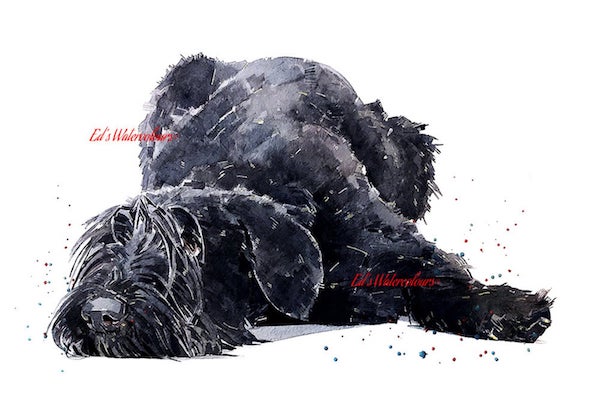
When Black Great Danes, Bouviers, and various smooth coated drover breeds were crossed in the early 19th century, the result was a dog that was called the Russian Bear Schnauzer. That was the name which appeared in the catalog for the thirty such dogs entered in a Munich dog show in 1909, the first exhibition appearance for the breed. Some cynologists dispute this pedigree even today, however, and maintain that the breed was descended from the Bear Schnauzer, a dog that was likely to have been a Bavarian variant of the Old German Shepherd Dog.
Those thirty dogs made such an impression on spectators that a club for the breed was formed just a month after the dog show. Rather than being called the Russian Bear Schnauzer Klub, the organization was known as the Munich Schnauzer Club, and it forecast the name by which we know the today, the Giant Schnauzer. The GS was certainly the last of the Schnauzer breeds to be standardized, but it was likely developed several decades before the Miniature Schnauzer.
The name, Russian Bear Schnauzer, has sometimes been seen as the Russian Bear Dog, and this can be confusing to people researching breeds. In some old books, the Black Russian Terrier has also been called the Russian Bear Dog, as has the Caucasian Ovcharka because of the latter’s appearance. Interestingly, the Caucasian Ovcharka was widely used by the Russian army’s kennels to develop other Soviet dog breeds including the Black Russian Terrier, Moscow Watchdog, and the Moscow Waterdog, and one might wonder if the BRT inherited the Ovcharka’s nickname.
No matter because by the turn of the century, the Giant Schnauzer was common throughout Bavaria and Munich, and though these dogs were known for a time as the Russian Bear Schnauzer, the name Giant Schnauzer stuck. It was further cemented when German authorities came to regard the breed as superior to any other breed as a police dog.
Image: “Today Was a Good Day” by is available for purchase here
